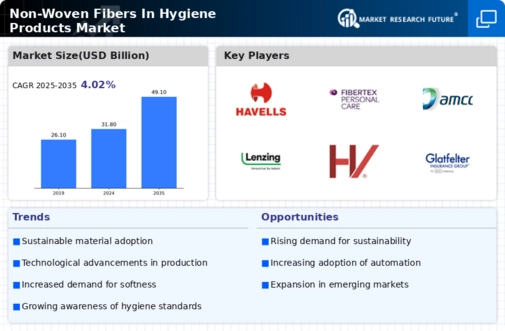Non Woven Fibers In Hygiene Products Market Summary
The Global Non-Woven Fibers In Hygiene Products Market is projected to grow from 31.80 USD Billion in 2024 to 49.07 USD Billion by 2035.
Key Market Trends & Highlights
Non-Woven Fibers In Hygiene Products Key Trends and Highlights
- The market is expected to witness a compound annual growth rate (CAGR) of 4.02% from 2025 to 2035.
- By 2035, the market valuation is anticipated to reach 49.1 USD Billion, indicating robust growth potential.
- in 2024, the market is valued at 31.80 USD Billion, reflecting a strong foundation for future expansion.
- Growing adoption of non-woven fibers in hygiene products due to increasing consumer awareness about hygiene is a major market driver.
Market Size & Forecast
| 2024 Market Size | 31.80 (USD Billion) |
| 2035 Market Size | 49.07 (USD Billion) |
| CAGR (2025-2035) | 4.02% |
Major Players
Havells India, Buckeye Technologies, Fibertex Personal Care, Jacob Holm, Berry, Idex Corporation, Lenzing, Hollingsworth Vose, Glatfelter, Chip Technologies, Kimberly-Clark, Freudenberg Co. KG, Mosdorfer




















